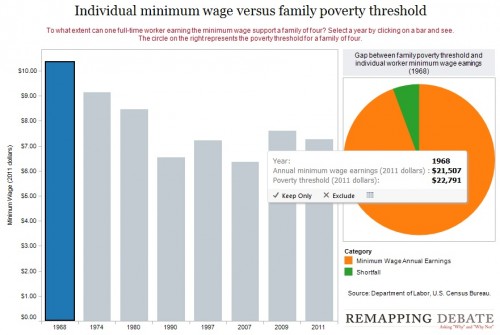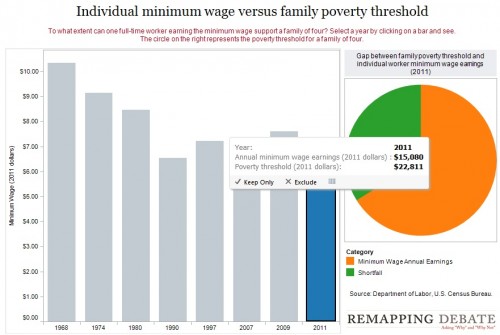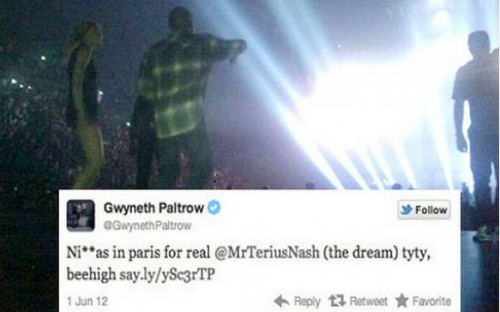Cross-posted at Montclair SocioBlog.
Air pollution is what economists call an “externality.” It is not an intrinsic part of the economic bargaining between producers and consumers. The usual market forces — buyers and sellers pursuing their own individual interests — won’t help. The market may bring us more goods at lower prices, for example, but it can harm the air that everyone, in or out of that market, has to breathe. To create or protect a public good, the free market has to be a little less free. That’s where government steps in. Or not.
Case in point: My son and his girlfriend arrived in Beijing ten days ago. The got-here-safely e-mail ended with this:
…was blown away by the pollution! I know people talk about it all the time, but it really is crazy.
And it is. Here’s a photo I grabbed from the Internet:

At about the same time, I came upon a this link to photos of my home town Pittsburgh in 1940. Here are two of them: 

Today in downtown Pittsburgh, the streetcars and overhead trolleys are gone. So are the fedoras. And so is the smoke.
The air became cleaner in the years following the end of the War. It didn’t become clean all by itself, and it didn’t become clean because of free-market forces. It got clean because of government — legislation and regulation, including an individual mandate.
The smoke was caused by the burning of coal, and while the steel mills accounted for some of the smoke, much of the it came from coal-burning furnaces in Pittsburghers’ houses. If the city was to have cleaner air, the government would have to force people change the way they heated their homes. And that is exactly what the law did. To create a public good — clean air — the law required individuals to purchase something — either non-polluting fuel (oil, gas, or smokeless coal) or smokeless equipment.*
Initially, not everyone favored smoke control, but as Pittsburgh became cleaner and lost its “Smoky City” label, approval of the regulations increased, and there was a fairly rapid transition to gas heating. By the 1950s, nobody longed for the unregulated air of 1940. Smoke control was a great success.** Of course, it may have helped that Pittsburgh did not have a major opposition party railing against this government takeover of home heating or claiming that smoke control was a jobs-killing assault on freedom.
————————
* Enforcement focused not on individuals but distributors. Truckers were forbidden from delivering the wrong kind of coal.
** For a fuller account of smoke control in Pittsburgh, see Joel A. Tarr and Bill C. Lamperes, Changing Fuel Use Behavior and Energy Transitions: The Pittsburgh Smoke Control Movement, 1940-1950: A Case Study in Historical Analogy. Journal of Social History , Vol. 14, No. 4, Special Issue on Applied History (Summer, 1981), pp. 561-588.
Jay Livingston is the chair of the Sociology Department at Montclair State University. You can follow him at Montclair SocioBlog or on Twitter.











